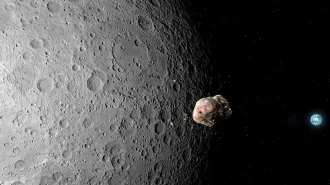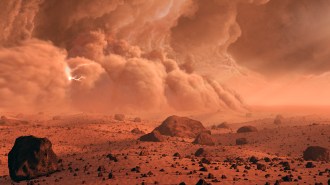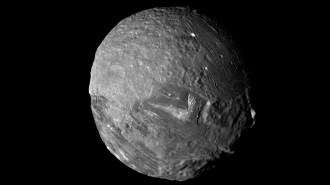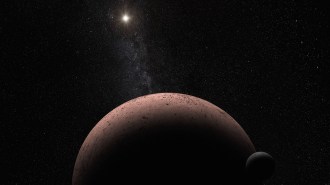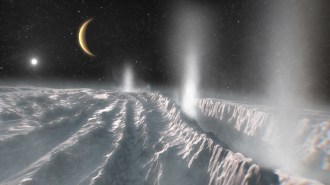Extreme gas loss dried out Mars, MAVEN data suggest
Argon lost to interactions with solar wind hints at transformed climate

LOST IN SPACE Solar wind has expelled two-thirds of the Martian atmosphere’s argon and a majority of its carbon dioxide into space, data from the MAVEN probe (illustrated here) suggest.
GSFC/NASA
